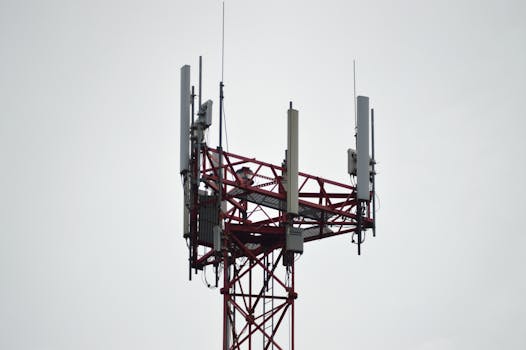
From Ground to Sky: The Evolution of Satellite Telecommunications Technology
Satellite Telecommunications has undergone significant transformations since its inception, evolving from a simple means of radio communication to a complex network of satellites providing high-speed internet connectivity worldwide. The focus keyword, Satellite Telecommunications, is the backbone of this evolution, driving innovation and growth in the industry.
The history of satellite telecommunications dates back to the 1950s, when the first artificial satellite, Sputnik, was launched into space. This marked the beginning of a new era in space exploration and communication. In the 1960s, the first commercial communications satellite, Intelsat 1, was launched, providing transatlantic telephone and television services.
The Early Years of Satellite Telecommunications
The early years of satellite telecommunications were marked by significant technological advancements. The development of geostationary satellites, which remain stationary in the sky, enabled the provision of continuous coverage over a specific region. This led to the establishment of satellite-based telephone and television networks, revolutionizing global communication.
The 1980s saw the introduction of mobile satellite services, which enabled communication on-the-go. This was made possible by the development of satellites with higher power and larger antennas, allowing for more efficient transmission and reception of signals. The launch of the first GPS satellite in 1978 marked the beginning of a new era in navigation and location-based services.
Modern Satellite Telecommunications Technology
Today, satellite telecommunications technology has become an integral part of modern life. The widespread adoption of satellite-based internet services has bridged the digital divide, providing connectivity to remote and underserved communities worldwide. High-throughput satellites (HTS) have enabled the provision of fast and reliable internet services, supporting a wide range of applications, from social media and online education to e-commerce and remote healthcare.
The development of advanced satellite technologies, such as Ka-band and Q/V-band, has further increased the capacity and efficiency of satellite-based communication systems. The use of satellite constellations, comprising multiple small satellites, has improved the resilience and flexibility of satellite networks, enabling the provision of seamless and ubiquitous coverage.
The Future of Satellite Telecommunications
The future of satellite telecommunications holds much promise, with ongoing research and development focused on improving the efficiency, capacity, and sustainability of satellite-based communication systems. The integration of satellite technology with emerging technologies, such as 5G and the Internet of Things (IoT), is expected to drive innovation and growth in the industry.
The increasing demand for satellite-based services, driven by the growing need for global connectivity and the expanding use of space-based applications, is expected to drive the growth of the satellite telecommunications market. As the industry continues to evolve, it is likely that we will see the development of new satellite technologies, such as optical communication systems and quantum satellites, which will further transform the way we communicate and interact with each other.

